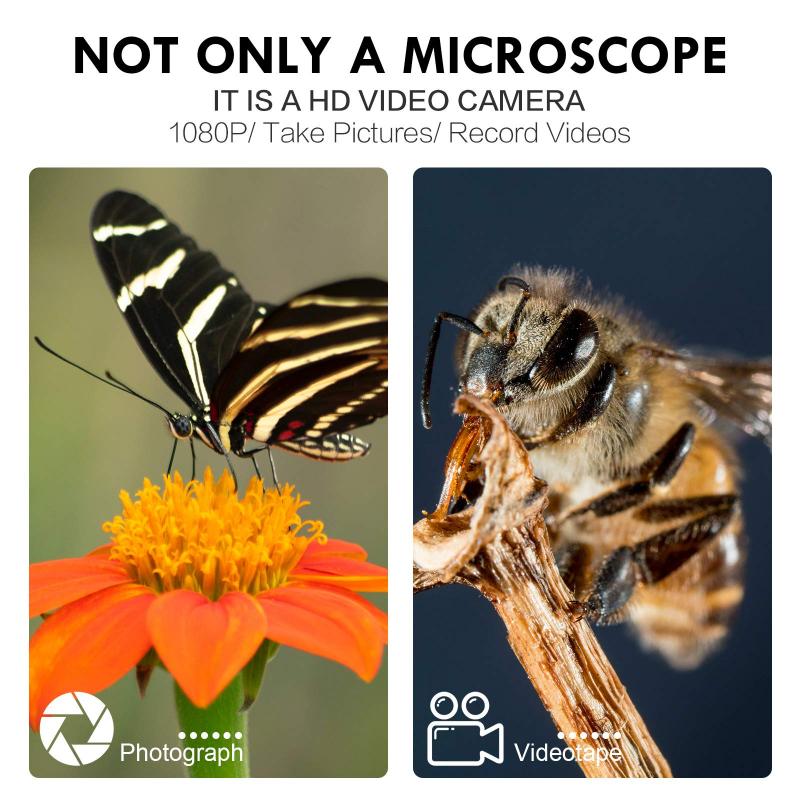How Do Cells Look Like Under A Microscope ?
Cells under a microscope appear as small, distinct structures with various shapes and sizes. They can be round, oval, elongated, or irregular in shape, depending on the type of cell. The overall appearance of cells can also vary based on the staining techniques used to enhance their visibility. When observed under a light microscope, cells typically have a transparent or slightly colored cytoplasm, which surrounds a darker, centrally located nucleus. The nucleus itself appears as a dense, spherical or oval structure within the cell. Additionally, some cells may contain other organelles, such as mitochondria, endoplasmic reticulum, or Golgi apparatus, which can be seen as smaller, distinct structures within the cytoplasm. Overall, the specific characteristics and arrangement of cellular components can provide valuable information about the type and function of the observed cells.
1、 Cell Structure: Organelles and their functions in cellular organization.
Cells are the basic building blocks of all living organisms, and their structure can be observed under a microscope. When viewed under a light microscope, cells appear as small, round or irregularly shaped structures. However, the advent of more advanced microscopy techniques, such as electron microscopy, has allowed scientists to gain a more detailed understanding of cell structure.
Under an electron microscope, cells reveal a complex and organized internal structure. The main components of a cell include the nucleus, cytoplasm, and cell membrane. The nucleus is the control center of the cell and contains the genetic material, DNA. Surrounding the nucleus is the cytoplasm, a gel-like substance that houses various organelles. These organelles perform specific functions necessary for the cell's survival.
Some of the key organelles include the mitochondria, which are responsible for energy production through cellular respiration, and the endoplasmic reticulum, which is involved in protein synthesis and lipid metabolism. The Golgi apparatus is responsible for modifying, sorting, and packaging proteins for transport within and outside the cell. Lysosomes contain enzymes that break down waste materials and cellular debris.
Additionally, cells may contain specialized structures depending on their function. For example, plant cells have chloroplasts, which are responsible for photosynthesis, and a rigid cell wall that provides structural support. Animal cells, on the other hand, may have centrioles involved in cell division.
It is important to note that cell structure can vary depending on the type of cell and its stage of development. Furthermore, advancements in microscopy techniques continue to provide new insights into cell structure and function. For example, super-resolution microscopy allows scientists to visualize cellular structures at a resolution beyond the diffraction limit of light, providing a more detailed understanding of cellular organization.
In conclusion, cells have a complex internal structure that can be observed under a microscope. The various organelles within a cell perform specific functions necessary for its survival. Advancements in microscopy techniques have allowed scientists to gain a deeper understanding of cell structure and function, and ongoing research continues to uncover new insights into cellular organization.

2、 Cell Types: Prokaryotic and eukaryotic cells and their distinguishing features.
Under a microscope, cells can be observed in great detail, revealing their intricate structures and features. There are two main types of cells: prokaryotic and eukaryotic cells, each with their distinguishing characteristics.
Prokaryotic cells, such as bacteria, are relatively simple in structure. They lack a nucleus and other membrane-bound organelles. Instead, their genetic material is found in a region called the nucleoid. Prokaryotic cells are typically smaller in size, ranging from 0.1 to 5 micrometers. They have a cell wall made of peptidoglycan, which provides structural support and protection. Some prokaryotes also possess flagella or pili for movement and attachment, respectively.
On the other hand, eukaryotic cells are more complex and larger in size, ranging from 10 to 100 micrometers. They have a distinct nucleus that houses their genetic material, enclosed within a nuclear membrane. Eukaryotic cells also contain various membrane-bound organelles, such as mitochondria, endoplasmic reticulum, Golgi apparatus, and lysosomes. These organelles perform specific functions within the cell. Additionally, eukaryotic cells have a cytoskeleton, which provides structural support and aids in cell movement.
Recent advancements in microscopy techniques, such as confocal microscopy and super-resolution microscopy, have allowed for even more detailed visualization of cellular structures. These techniques have revealed the dynamic nature of cells, showing processes like cell division, protein trafficking, and organelle interactions in real-time.
In conclusion, under a microscope, prokaryotic cells appear simpler with no nucleus and membrane-bound organelles, while eukaryotic cells are more complex with a distinct nucleus and various organelles. The latest microscopy techniques have provided deeper insights into the intricate structures and dynamic processes occurring within cells.

3、 Cell Morphology: Shapes and sizes of cells in different organisms.
Under a microscope, cells exhibit a wide range of shapes and sizes, which can vary depending on the type of organism they belong to. Cell morphology refers to the study of these shapes and sizes, providing valuable insights into the structure and function of cells.
In general, cells can be classified into two broad categories: prokaryotic and eukaryotic. Prokaryotic cells, found in bacteria and archaea, are typically small and simple in structure. They lack a distinct nucleus and other membrane-bound organelles. Instead, their genetic material is found in a region called the nucleoid. Prokaryotic cells are usually spherical, rod-shaped, or spiral in shape.
On the other hand, eukaryotic cells, found in plants, animals, fungi, and protists, are more complex. They possess a distinct nucleus and various membrane-bound organelles, such as mitochondria, endoplasmic reticulum, and Golgi apparatus. Eukaryotic cells come in a variety of shapes, including spherical, elongated, flat, and irregular. For example, nerve cells are long and slender, while red blood cells are biconcave discs.
Advancements in microscopy techniques have allowed scientists to observe cells in greater detail. High-resolution microscopy, such as confocal microscopy and electron microscopy, provides a more precise view of cell structures. These techniques have revealed intricate details of cellular components, such as the arrangement of microtubules, the organization of organelles, and the presence of specialized structures like cilia and flagella.
It is important to note that cell morphology can vary even within the same organism. Different cell types have distinct shapes and sizes to fulfill their specific functions. For instance, muscle cells are elongated and contain contractile proteins, while skin cells are flat and tightly packed to form a protective barrier.
In conclusion, cells exhibit diverse shapes and sizes under a microscope, reflecting their unique functions and adaptations. Ongoing research and technological advancements continue to enhance our understanding of cell morphology, shedding light on the intricate structures and processes that occur within cells.

4、 Cell Division: Mitosis and meiosis processes for cell replication.
Under a microscope, cells appear as small, distinct structures with various shapes and sizes. The specific appearance of cells can vary depending on the type of cell and the stage of the cell cycle.
During cell division, two main processes occur: mitosis and meiosis. Mitosis is the process by which somatic cells replicate, while meiosis is the process by which reproductive cells (gametes) replicate.
During mitosis, cells go through a series of stages: prophase, metaphase, anaphase, and telophase. Under a microscope, cells in prophase appear as condensed chromosomes, which are visible as distinct structures within the cell. In metaphase, the chromosomes align along the center of the cell, forming a characteristic "metaphase plate." During anaphase, the chromosomes separate and move towards opposite ends of the cell. Finally, in telophase, the cell begins to divide into two daughter cells.
Meiosis, on the other hand, involves two rounds of cell division, resulting in the formation of four daughter cells with half the number of chromosomes as the parent cell. The stages of meiosis are similar to those of mitosis, but with some key differences. In meiosis I, homologous chromosomes pair up and exchange genetic material in a process called crossing over. This results in genetic variation. In meiosis II, the sister chromatids separate, similar to mitosis, resulting in the formation of four genetically unique daughter cells.
It is important to note that the latest advancements in microscopy techniques, such as confocal microscopy and super-resolution microscopy, have allowed scientists to observe cells with higher resolution and detail. These techniques provide a clearer understanding of the intricate processes involved in cell division and replication.







































